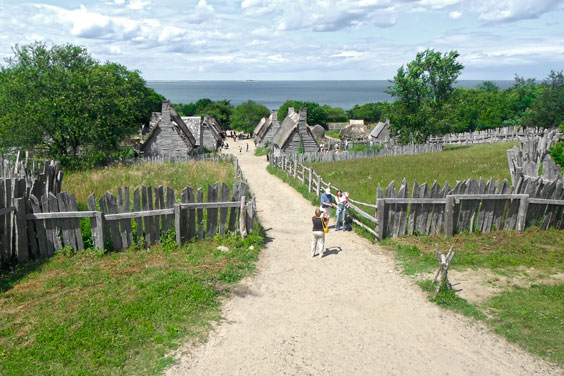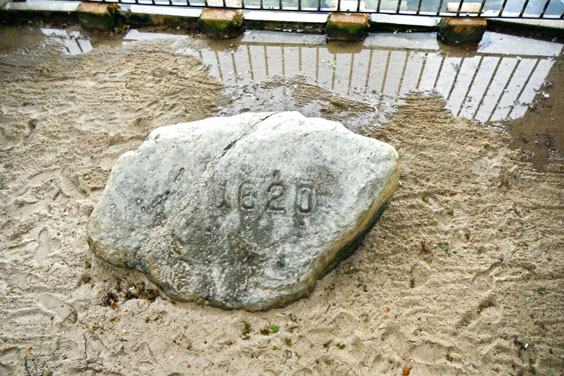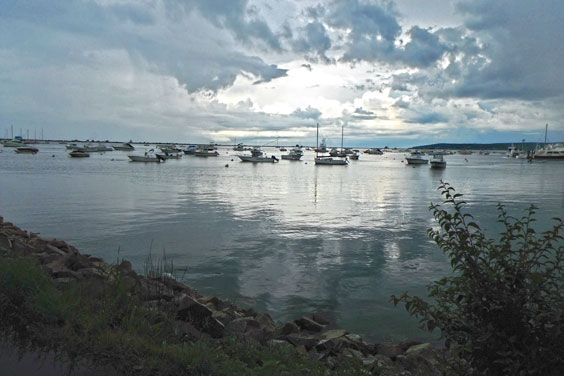A history of the first Thanksgiving

A view of the Atlantic from Plymouth Plantation, only miles away from the true sight of the first Thanksgiving.
Article and photos by Liz Jurkowski
Turkey, mashed potatoes, and pumpkin pie are all traditional Thanksgiving feast foods that we expect and devour every year. Would it surprise you to know that none of those tasty treats were at the Pilgrims’ first harvest feast in 1621?
Actually, the Pilgrims did not even call the celebration they had “Thanksgiving.” That term was for religious days of thanks, and as religious as the first Massachusetts Bay colonists were, they would not have imagined calling it a day of thanks. Their governor, William Bradford, however, did want to hold a feast to celebrate their much needed good fortune. He asked four of the remaining fifty-three settlers to “go fowling” and to invite the Wampanoag Chief Massasoit to their party.
Chief Massasoit arrived with Squanto, the interpreter who had lived with the Pilgrims during their first winter and had taught them how to plant and grow native plants like corn. They also brought deer which added venison to the menu. Also, over ninety Wampanoag showed up for the several days of feasting, nearly doubling the guest list.
Along with the venison and duck meat, the meal likely consisted of fresh lobster, seal, cabbage and squash. They knew how to make porridge out of ground corn, but they did not have an oven, and had used up their entire reserve of sugar brought over on the Mayflower. So there were no fancy desserts, like cakes or pies. Nor had they learned to harvest cranberries, so they did not have a cranberry relish or sauce, either.
It is believed that the banquet lasted at least three days. At the high table Governor Bradford probably sat with Chief Massasoit and Squanto, as well as Captain Miles Standish and William Brewster, the Pilgrims’ religious leader. It was a celebration, marking a turning point for the European settlers after their Starving Time, where more than half of them died the previous winter.
Over the two centuries that followed, many individual states declared holidays in honor of the Pilgrim feast. But it was not until 1863, in the middle of the Civil War, when Abraham Lincoln proclaimed a national Thanksgiving Day to be held on the last Thursday of November. The date moved around, markedly by F.D. Roosevelt who shifted it to earlier in the month during the Great Depression, hoping to stimulate the economy (he might have been thinking of the Black Friday deals), but the idea flopped and the holiday was moved again to the fourth Thursday.

Plymouth Rock, with the year 1620 inscribed on it, has its own mysterious history.
